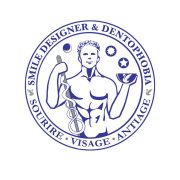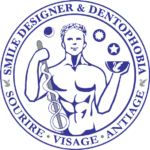Conscious Dental Sedation
reduce stress and anxiety
our zero STRESS zero pain COMMITMENT:
Your dental care under CONSCIOUS SEDATION
CONSCIOUS DENTAL SEDATION
reduce stress and anxiety
Today the new techniques of sedation make it possible to carry out the whole of the dental care, and periodontology. But also the placement of dental implants and the realization of techniques to optimize the aesthetics of the smile in a minimum of time, without stress and pain.
Coming from Latin sedare, which means to tranquilize, to soothe, sedation characterizes the putting to sleep of the central nervous system with the help of more or less powerful drugs. There are different levels of conscious sedation, depending on the type of medication used. These levels of sedation range from simple soothing to drowsiness.
The main advantage of conscious sedation is that it is reversible and can be used as often as needed. Of course, without any consequences on the organism.
Conscious sedation attenuates the perception of the environment. It reduces stress and anxiety. It has no effect on very anxious or phobic patients. The patient breathes normally and retains the swallowing reflex.
Contrary to general anesthesia, conscious sedation does not exempt the dental surgeon from performing a local anesthesia of the area to be treated. Conscious sedation is a relaxation in preparation for local anesthesia and the actual procedure.
Depending on the patient’s request for comfort and the type of procedure to be performed, which may be more or less invasive, conscious sedation techniques place the person in a state ranging from simple relaxation to light sleep. This way, the treatment session takes place in the best possible conditions.
The choice of conscious sedation is always based on an exchange between the patient and the practitioner. The latter will decide on the best type of sedation and the optimal treatment plan, taking into account all the psychological and medical factors and the patient’s time and/or professional constraints, and will respect the legislation of the countries where the care is provided.
CHOICE OF CONSCIOUS DENTAL SEDATION
PUNCTUAL INHALATION SEDATION
MEOPA gas or nitrous oxide
If you, your child or an elderly person, have a moderate fear of dental care or diffuse anxiety at the idea of minor surgery, or if you are afraid of injections (achmophobia) or blood tests (hemophobia), inhalation of a gas called MEOPA (Mixture Equimolar of Oxygen and Nitrous Oxide) represents an interesting solution.
This gas is also available under other trade names, such as KALINOX ® or ENTONOX ®.
Its effect is similar to that of the relaxing tablet, but its mode of action is different, since it is immediate, unlike the tablet, which does not act until long after it is taken.
This second level of conscious dental sedation induces a slight narcosis by inhalation of a euphoric gas (the other name of MEOPA gas is laughing gas).
MEOPA gas achieves three effects:
an anxiolytic effect (anxiety is reduced)
an analgesic effect (it increases the pain perception threshold)
a slight amnesia effect (it generates a modified state of consciousness, while allowing the patient to interact with the dentist and respond to simple commands)
The patient remains conscious, even if his notion of the passage of time is slightly blunted. The inhalation produces a soothing effect that is conducive to the smooth running of the treatment. Moreover, the hallucinogenic effect of MEOPA gas induces a slight analgesia by a nitrogen narcosis effect.
For the adult, the anxious child, the elderly patient, the frail person.
The inhalation of MEOPA gas, composed of 50% nitrous oxide and 50% oxygen, is a solution commonly used by a growing number of dentists since the end of the 1990s. The marketing authorization of this gas, diluted in this way, protects the brain and guarantees the total safety of this drug.
The use of MEOPA gas can help people who feel apprehensive to facilitate the dental care process. The same is true for children who have a moderate fear of the dentist or who are not accustomed to certain types of dental care, for people with mental disabilities, or for elderly people with cognitive problems.
However, in the case of a proven phobia of the dentist, the inhalation of MEOPA gas will not be sufficient.
Indeed, the MEOPA gas is difficult to adapt during the intervention and the control of the effects is relatively random from one patient to another. In addition, be aware that the effects are relatively short-lived. Therefore, the act must be as well. This protocol is therefore not adapted to long treatment sessions, which will be very painful for true phobics.
It is the responsibility of your dentist to explain all the sedation methods that may be available to you before implementing your treatment plan. Thus informed, you will be able to choose together, a conscious sedation, a semi-unconscious sedation or a unconscious sedation, according to the nature of the act to be carried out, your state of health and your anxiety level.
Finally, in practice, the use of MEOPA gas is rarely contraindicated.
The inhalation diffuses into the lungs and then into the bloodstream and reaches the brain causing a soothing and euphoric effect. As you breathe in this gas, you lose more or less awareness of the care you are undergoing. You may also drowse, but you will not fall into a deep sleep.
If you need to undergo treatment while breathing MEOPA gas, your dentist will need to give you a local anesthetic. MEOPA gas does not take away the pain. However, it will help you to bear the sting of this local anesthesia.
Beyond the reduction of anxiety generated by dental care, the interest of using MEOPA lies in the fact that this mode of conscious sedation can be repeated frequently. With your anxiety reduced, you can then initiate a dental care session that you had to give up because you could not find a suitable medication.
Lying on the dental chair, the patient is taken care of. A mask is placed on his face. A gas mixture containing oxygen enters the mask via a hose connected to the compressed gas cylinder.
The patient breathes in the gas mixture that will make him laugh and relax. Breathing MEOPA is a first step to support the sting of local anesthesia. It can be sufficient only for a simple and quick gesture.
If you need to breathe in more gas so that the dental surgeon can perform the treatment in the best conditions, you will be able to do so without difficulty or danger to your health. You will simply need to be accompanied home and not drive on the day of the sedation.
As proof of the safety of the technique, health agencies require dentists offering conscious sedation in their offices to be trained. This sedation will be offered in places suitable for this technique, i.e. “in suitable premises, by specifically trained medical or paramedical staff, whose knowledge is periodically re-evaluated”.
A precise set of specifications therefore clearly defines the scope of training in the use of nitrous oxide gas in the practice.
You will be in the hands of a professional experienced in the best conscious sedation techniques. In addition, during the treatment, you will be permanently monitored by an oximeter. Your dentist will constantly monitor the oxygen content of your circulating blood and your heart rate (pulse).
Be aware that the use of MEOPA gas is not covered by insurance. Only care performed by your dentist may be. The use of this mode of conscious sedation. Can, perhaps, be covered by your private health insurance. Ask her for more information.
Because of its short duration of action, inhalation of MEOPA gas is reserved for short, non-invasive treatments.
It is also very useful for achmophobic people at the time of the anesthesia mouth prick or in case of catheterization. Indeed, the use of MEOPA makes the veins swell and thus facilitates phlebotomy.
On the other hand, its action during surgery is very weak and is totally without effect for patients suffering from dentophobia.
Finally, the use of MEOPA can be complicated to implement during treatment because the patient must blow out some of the MEOPA without the dentist breathing it in.
Benzodiazepine relaxing tablet
The relaxing tablet represents the first level of sedation. It provokes a light appeasement, the day before and the day of the intervention. It can be performed by all dentists.
The relaxing tablet helps to curb the rise in pre-operative stress, which will necessarily increase as the operation gets closer.
Any patient will have concerns before any procedure, even a minor one. This method of sedation can thus be administered to any patient, regardless of the nature of the procedure envisaged. Conscious sedation with a relaxing tablet offers you the possibility of lowering your level of consciousness, so that you can administer the dental care you need, without stress, and in the best conditions. However, you do not sleep, and remain conscious during the whole act.
The effect is essentially a certain temporal disconnection. You see less time passing for long sessions. But in no case this type of sedation is indicated for stomatophobics who wish a total disconnection.
Taking a relaxing tablet is also very interesting in the context of oral surgery because it acts as an additional analgesia.
However, if you have a real phobia of the dentist, sedation with a relaxing tablet is not the right method of dental sedation for you. In this case, you will have to discuss with your dentist the possibility of semi-unconscious sedation or even unconscious sedation.
If it doesn’t make you sleep, the relaxing tablet puts you in a state of relaxation so that your fears and anxiety are greatly reduced, making routine care possible, which can last from a few minutes to less than two hours.
However, you should know that the relaxing tablet does not work equally well for everyone. A patient with real anxiety may not feel the effects. The latter may also be reduced in a patient who is generally anxious and who is used to taking this type of medication more or less regularly.
If this is your case, it is therefore advisable, before the procedure is performed, that you discuss openly with your dentist all your current treatments, especially if you are already taking anxiolytics or drugs considered illegal (cannabis, cocaine, heroin, etc.). The practitioner will then choose the best medication and dosage for you.
At your first appointment, your dentist will ask you to answer a questionnaire to better understand your needs and your general health. He can then bring to light a possible phobia or a diffuse anxiety at the mention of dental care. The purpose of this questionnaire is to get to know each other, but also to avoid missing out on a fear of the dentist that a treatment carried out without specific care could only exacerbate.
On this occasion, the dentist will ask you, on a scale of 1 to 20, to evaluate your level of anxiety at the mere mention of having to undergo dental care. From 10/20 onwards, it is considered that sedation is necessary. Beyond its informative side, this questionnaire will be an opportunity to create a link with your dentist, to be listened to and to create a climate of trust, an essential prerequisite for the care to go smoothly.
The objective of taking the relaxing tablet is to obtain a state of maximum relaxation, so as to optimize the physical and psychological comfort of the patient, allowing the normal realization of dental care.
Generally speaking, the anxiolytics most frequently used by dentists belong to the Benzodiazepine family, and in particular the Benzodiazepines with a long half-life, i.e. whose effects can be prolonged in the body. Known to reduce anxiety, muscle spasms, insomnia and anxiety attacks, their effects vary in duration. They will therefore be chosen according to the planned surgical procedure.
Thus, once the surgical decision has been made, your dental surgeon will prescribe one or more tablets per day the day before or several days before the operation.
During the preliminary interview with your dentist, it is important that you mention any health problems that may affect the prescription of Benzodiazepines, such as allergy to one of the components, severe respiratory insufficiency, sleep apnea syndrome, hepatic insufficiency, myasthenia gravis, alcoholism, smoking or addiction to any form of drugs.
Taking a relaxing tablet allows, in absolute terms, the realization of many dental procedures, whether it is dental care, oral surgery, periodontology, dental prosthesis installation, or implants.
Moreover, taking a relaxant tablet allows this type of sedation to be repeated frequently, which is particularly interesting for patients who are out of treatment due to fear of the dentist.
On the other hand, this type of sedation is totally inoperative for patients suffering from proven stomatophobia.
The relaxing tablet, a light sedation
YOU ARE UNIQUE!
CLINICAL CASES SMILE RECONSTRUCTION UNDER CONSCIOUS DENTAL SEDATION



